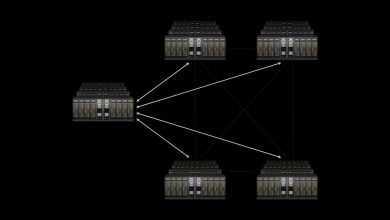4 Essential Use Cases for Zero-Trust Security in the Age of Digital Modernisation

Digitalise with caution.
In today’s technology-driven era, organisations must heed this mantra. Digital modernisation, the practice of integrating and updating digital technologies across all business areas, can truly define success versus stagnation. It not only transforms entire operations but also enhances customer value, boosts efficiency, and increases agility.
However, the downside is that digitalisation also exposes you to diverse threats that can undermine your progress, lead to legal issues, and pose financial risks. This is why you need to beef up your security with zero trust, which eschews the “trust but verify” approach in favour of “trust no one.”
This might sound extreme, but it’s actually a revolutionary approach to network security. Unlike traditional castle-and-moat models that trust anyone inside the network perimeter, zero trust assumes everyone and everything needs verification—constantly.
This shift might seem daunting, but it’s essential. Traditional models leave your organisation vulnerable to insider threats and lateral movement, where attackers exploit a single entry point to access everything within. Zero trust addresses these concerns head-on, offering a secure foundation for today’s dynamic environments.
But how does zero trust translate into real-world benefits? Let’s explore four key use cases that demonstrate its practical applications:
- Zero Trust vs VPNs
Using a Virtual Private Network (VPN) may no longer be ideal for defending against today’s threats since users are authenticated only once. If bad actors manage to secure even a single VPN credential, they essentially gain unrestricted access to your network. Additionally, VPNs can increase your attack surface, limit visibility, and frustrate end users as they “trombone” all traffic to and from central on-prem appliances, resulting in productivity-sapping latency.
Threat actors are increasingly targeting VPNs. Zero trust secures the network by authenticating every request, rendering compromised credentials useless—and harmless. Advanced zero-trust solutions, like Cloudflare Access, entirely replace VPNs with a cloud-based zero-trust solution that provides secure access to an organisation’s network and applications. Zero trust also stops the trombone—in effect reducing end-user friction—and eliminates the risk of lateral movement.
- Securing the Remote Workforce and Third-Party Users
Remote work has expanded the attack surface because employees are using their own devices, relying on potentially unsecured Internet connections, and accessing the organisation’s digital assets remotely. Unfortunately, VPNs cannot secure this exposed attack surface, which slows down productivity. For companies that regularly collaborate with third parties, this involves providing application access to external partners. This is also a security risk, with these virtual “strangers” often getting too much privilege that threat actors will easily exploit.
Zero trust makes it harder for bad actors to breach the network by verifying every access request. This ensures only authorised users and devices can access specific resources, minimising the risk of unauthorised access. Plus, modern zero-trust solutions, like Cloudflare Zero Trust, are designed for speed, ensuring remote teams stay productive. Zero trust also ensures that contractors only access what they need for the time that they need it. This eliminates the unnecessary risks that come with unfiltered access. In addition, solutions like Cloudflare Access streamline onboarding with a secure and user-friendly experience for everyone.
- Mitigating Ransomware Attacks
Ransomware, malicious software that locks up files and holds them for ransom, has become a major problem, with the average total cost of a ransomware attack being about USD $2 million in terms of lost business and other factors. Not to mention ransom demands that often reach hundreds of thousands, if not millions.
Zero trust helps combat ransomware by continuously monitoring and regularly re-authenticating both users and devices. As soon as an infection is detected, network and application access are immediately revoked, preventing ransomware attacks from spreading and doing damage. In addition, least privilege access control makes it difficult for ransomware to escalate its privileges and move laterally to gain control over a network.
- Augmenting AI-Driven Security
Cybersecurity today increasingly relies on Artificial Intelligence (AI) to detect anomalies and automate threat response. By integrating threat intelligence capabilities, organisations can gain deeper insights into emerging threats and vulnerabilities. Zero trust augments this through stringent access controls and by limiting the attack surface, while AI ensures continuous and contextual authentication to further protect data and minimise risks. In other words, this synergy between zero trust and AI provides a dynamic, robust defence against sophisticated cyber threats.
While “trust no one” might seem extreme, zero trust isn’t about paranoia; it’s about proactive security. This approach, where access is constantly verified, may require a shift in mindset, but the rewards are clear: A more secure and adaptable digital environment that enables digital modernisation.
Indeed, implementing zero trust is a crucial step in bolstering your organisation’s security posture. To learn more about how zero trust fits into a broader security strategy and explore other critical security use cases, download Cloudflare’s free e-book, The Buyer’s Guide to SASE Use Cases. Discover how to navigate your security priorities and select the right platform to accelerate your journey.
Click HERE to download this special guide.






